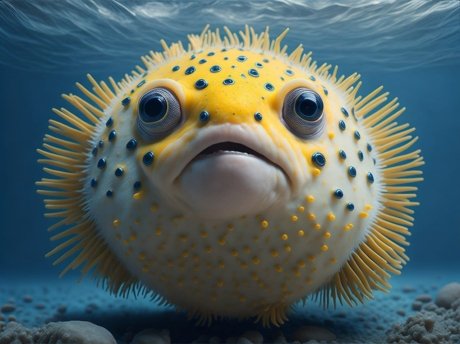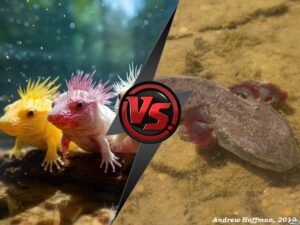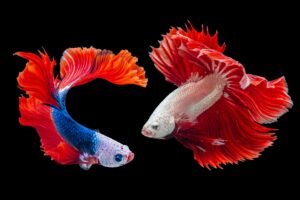Black Axolotl | Characteristics, Prices, Care Tips, Breeding, History
In the depths of aquatic wonder, the black axolotl reigns as an embodiment of enigma. Its genetic uniqueness, scientific significance, and cultural resonance intertwine to create a narrative that transcends boundaries. As we navigate the currents of this exploration, we emerge with a profound appreciation for the intricacies of life and the captivating allure of the axolotl.
Unveiling the Enigma of the Black Axolotl
Nestled in the intricate tapestry of aquatic life, the black axolotl emerges as a creature of mystery and allure. In this comprehensive exploration, we delve deep into the world of the black axolotl, unraveling its unique traits, genetic makeup, conservation importance, and its captivating place in both scientific research and popular culture. Embark with us on this journey into the abyss as we uncover the enigma of the axolotl.

What Sets the Black Axolotl Apart?
Imagine a creature shrouded in darkness, a striking deviation from the traditional pink hue of its kin. The black axolotl, scientifically referred to as Ambystoma mexicanum, stands as a rare gem within the axolotl species. Its velvety ebony skin harmoniously complements its feathery external gills, giving rise to an unparalleled aquatic marvel. But what makes this variant unique? Let’s journey into the genetics that paint this creature with the hues of midnight.
Delving into the Genetics of Darkness
The key to the black axolotl’s distinctive appearance lies within its genetic makeup. A mysterious anomaly triggers the production of eumelanin, the pigment responsible for the deep black coloration. Scientific minds continue to unravel the intricacies of this genetic quirk, probing into the depths of its origin and potential implications. The allure of the dark axolotl extends beyond its captivating exterior; it paves the way for genetic inquiries that span the spectrum of life itself.

Exploring the Natural Habitat of the Black Axolotl
The black axolotl’s natural habitat weaves a tale of urbanization and ecological challenges. Native to the Xochimilco lakes in Mexico, these enigmatic creatures have navigated the waves of environmental change. Human impact and pollution have cast shadows over their native abode, necessitating conservation efforts to safeguard their existence. As we delve into their natural range, we gain insight into the delicate balance between adaptation and conservation.
The Intriguing History of Axolotls
To truly appreciate the black axolotl’s significance, we must delve into the annals of history. Revered by the Aztecs for their mystical qualities, axolotls have long captured human imagination. From ancient mythology to contemporary fascination, their presence transcends time. The tale of the dark axolotl merges with this historical narrative, forming a tapestry interwoven with culture, curiosity, and scientific exploration.
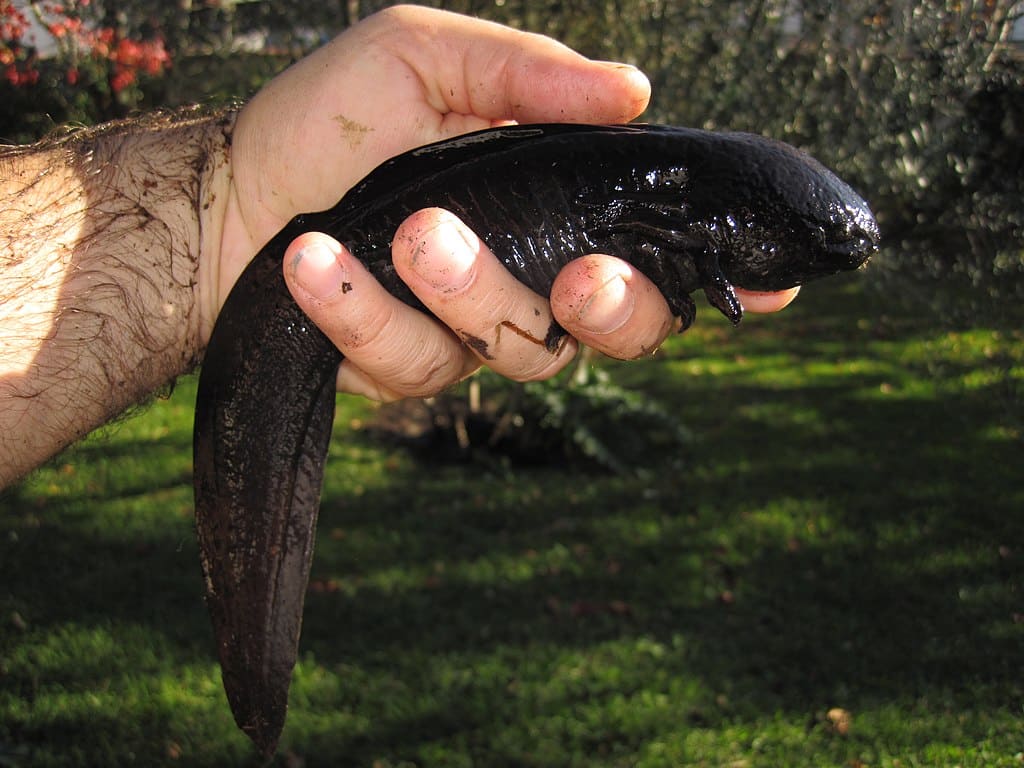
How to Properly Care for Black Axolotls
As aquatic enthusiasts are drawn to the captivating allure of the black axolotl, responsible care becomes paramount. Creating a habitat that mirrors their native waters is essential. Cool, clean water and ample space foster their well-being. Additionally, their carnivorous nature necessitates a diet that caters to their nutritional needs. By understanding their care requirements, we ensure a thriving existence for these captivating creatures.
Black Axolotls Prices
Black Axolotls Price in United States:
- Common Axolotl Price in United States: Prices range from $20 to $50, depending on the colour and size.
- Leucistic Axolotl Price in United States: Generally priced around $50 to $100 due to their unique appearance.
- Golden Albino Axolotl Price in United States: Prices can vary between $40 to $80 based on size and availability.
- Black Axolotl Price in United States: Being relatively rare, dark axolotls can command higher prices, ranging from $100 to $200 or more.
Black Axolotls Price in United Kingdom:
- Common Axolotl Price in United Kingdom: Prices are similar to the US, ranging from £15 to £40.
- Leucistic Axolotl Price in United Kingdom: Prices may range from £40 to £80 or more.
- Golden Albino Axolotl Price in United Kingdom: Prices are comparable to the US, around £30 to £60.
- Black Axolotl Price in United Kingdom: Due to their rarity, dark axolotls might be priced between £80 to £150 or higher.
Black Axolotls Price in Canada:
- Common Axolotl Price in Canada: Prices range from $20 to $50, depending on the colour and size.
Black Axolotls Price in Australia:
- Axolotls are less commonly available in Australia due to restrictions on their import and sale. Prices can be higher, starting from AUD $50 and going up depending on the species.
Black Axolotls Price in India:
- Common Axolotl Price in India: Prices may start from INR 500 and go up based on size and colour.
- Leucistic Axolotl Price in India: Prices could range from INR 800 to INR 1500.
- Golden Albino Axolotl Price in India: Prices might start around INR 1000 and increase with size.
- Black Axolotl Price in India: Given their rarity, black axolotls may be priced between INR 1500 to INR 3000 or higher.
Breeding Wonders: The Fascinating World of Axolotl Reproduction
The journey into the world of axolotls wouldn’t be complete without a peek into their unique reproductive strategies. Axolotls exhibit neoteny, retaining their aquatic larval features throughout their lives. While black axolotls’ rarity adds intrigue to their breeding, success stories have emerged through careful selection and controlled environments. Exploring their reproductive wonders unveils yet another layer of their remarkable existence.
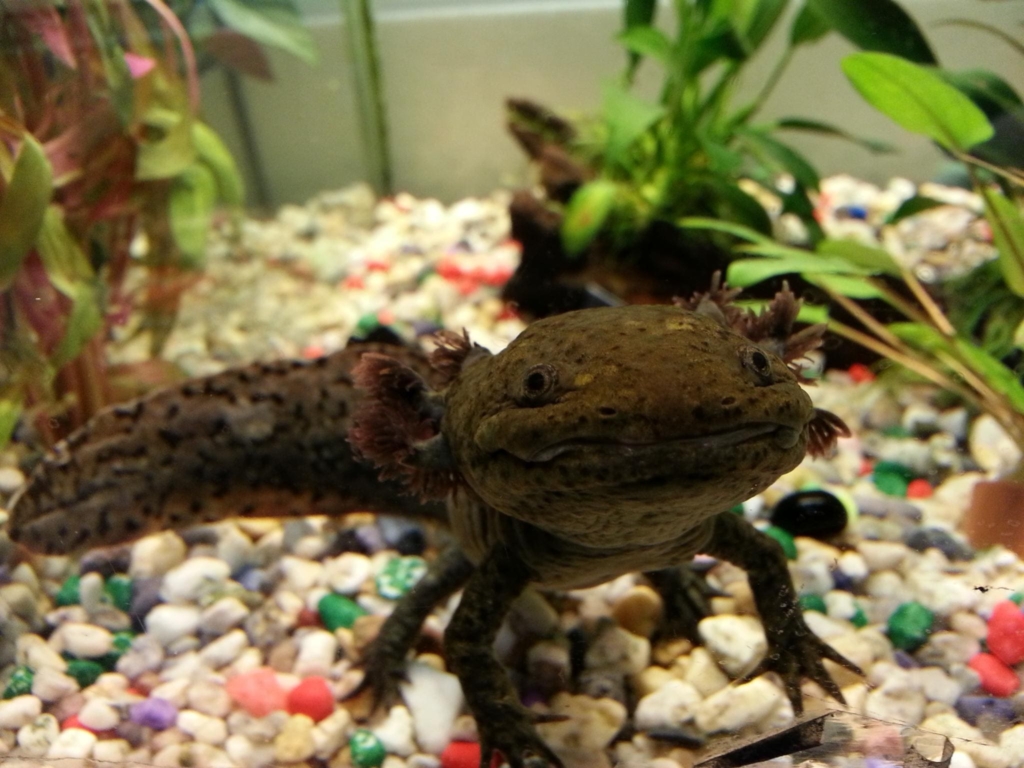
Unraveling the Genetic Mysteries of Black Axolotls
Beneath the surface of the ebony exterior lies a realm of genetic intricacies waiting to be deciphered. Scientists and researchers are tirelessly unraveling the genetic mysteries of dark axolotls, driven by the desire to understand the mechanisms behind their unique colouration. These genetic insights extend beyond aesthetics, touching on adaptation, evolution, and the intricate dance of life’s building blocks.

Black Axolotls in Scientific Research: Regeneration and Beyond
The scientific community’s fascination with axolotls transcends their captivating appearance. Their regenerative abilities, a hallmark of their species, have garnered attention for their potential applications in regenerative medicine. From regrowing limbs to repairing spinal cords, the axolotl’s abilities have kindled hope for breakthroughs in human medical science. The black axolotl’s contribution to this narrative infuses it with scientific importance beyond its striking aesthetics.
The Imperative of Conservation: Protecting the Black Axolotl
Conservation becomes a call to action when a species’ survival is at stake. The black axolotl, like its paler counterparts, faces challenges arising from habitat destruction and environmental degradation. Conservation efforts aim to preserve their native habitats, contributing to the delicate balance of ecosystems. The dark axolotl’s rarity and genetic uniqueness lend urgency to the imperative of conservation.

From Captivation to Companionship: The Allure of Axolotl Keeping
The allure of axolotls extends beyond scientific curiosity; it extends to the realm of companionship. Their unique traits and low-maintenance care requirements make them appealing to a wide range of aquatic enthusiasts. From beginners to experienced keepers, the journey of axolotl keeping weaves a narrative of companionship, curiosity, and a deep appreciation for aquatic life.
Lesser-Known Marvels: Astonishing Facts About Axolotls
Beneath the surface of common knowledge lies a trove of lesser-known marvels about axolotls. Did you know that axolotls have the ability to regenerate not just limbs, but even spinal cords and heart tissues?

Their cannibalistic tendencies, heightened sense of smell, and other intriguing behaviours contribute to the layers of fascination that surround them.
Dispelling Myths: Separating Fact from Fiction About Axolotls
The realm of axolotls is not immune to myths and misconceptions. Contrary to some beliefs, axolotls are amphibians, not fish. Additionally, while their regenerative abilities are remarkable, they do not grant them immortality. Diving into these myths and uncovering the truths behind them enhances our understanding of these enigmatic creatures.
From Aquariums to Art: Black Axolotls in Popular Culture
The world of popular culture is no stranger to the captivating allure of black axolotls. Their striking appearance and air of mystery have found their way into various artistic mediums. From aquariums to art galleries, the dark axolotl’s presence continues to cast a spell on human imagination, reminding us of the beauty and complexity of the natural world.
Conclusion:
As our journey through the depths of the black axolotl’s world comes to a close, we are left with a profound sense of awe and curiosity. This creature, shrouded in ebony, transcends its coloration to become a symbol of mystery, scientific exploration, and the delicate dance of life. The enigmatic allure of the dark axolotl invites us to contemplate the wonders that thrive within the aquatic realm.
Frequently Asked Questions on Black Axolotls:
-
Are black axolotls found in the wild?
While black axolotls are exceedingly rare in their natural habitat, they are more commonly found in captivity.
-
Are black axolotls suitable for novice pet owners?
Indeed, black axolotls make excellent pets for beginners due to their relatively straightforward care requirements and captivating presence.
-
Do black axolotls demand specialized care due to their colouration?
Black axolotls share similar care needs with their lighter counterparts. However, their dark colouration may warrant additional attention to detail.
-
Does the black colouration impact black axolotls’ survival?
While the black colouration may attract attention, captive breeding programs ensure their well-being, minimizing potential disadvantages.
-
Can I keep black axolotls with other aquatic species in the same tank?
While axolotls are generally peaceful, they have a tendency to be cannibalistic and may see smaller tank mates as potential prey. It’s best to keep them in a dedicated tank to avoid any conflicts.
-
What is the lifespan of a black axolotl in captivity?
With proper care, dark axolotls can live up to 10-15 years in captivity. Providing a suitable habitat, balanced diet, and regular maintenance can contribute to their longevity.
-
Do black axolotls require specialized lighting in their tank?
Black axolotls do not have specific lighting requirements. In fact, they prefer dimly lit environments to mimic their natural habitat. However, some low-level lighting can help you observe their activities.
-
How often should I feed my black axolotl, and what do they eat?
Axolotls are carnivores and should be fed 2-3 times a week. Their diet includes live or frozen food like earthworms, bloodworms, and small aquatic insects. Providing a varied diet ensures they receive proper nutrition.
-
Can I breed black axolotls at home, and is it a complicated process?
Breeding Dark axolotls at home is possible but can be more challenging due to their rarity. Successful breeding requires careful temperature regulation, water quality management, and a controlled environment. Research and preparation are key to increasing your chances of success.
-
Are there any specific water parameters I should maintain for black axolotls?
Dark axolotls thrive in cool water conditions with temperatures around 60-68°F (15-20°C). It’s important to keep ammonia and nitrite levels at zero, and nitrates below 20 ppm. Regular water changes are crucial to maintaining optimal water quality.
-
Can I handle my black axolotl, or does it stress them?
While some axolotls can tolerate handling to a certain extent, it’s best to minimize handling as it can cause stress. Their skin is sensitive and can easily be damaged. If you need to handle them, do so with wet hands and be gentle.
-
What makes black axolotls different from other axolotl variants?
The most obvious difference is their black colouration, which is the result of a genetic mutation. While their care requirements and behaviours are similar to other axolotl variants, their striking appearance sets them apart.
-
Can I house multiple dark axolotls together?
Housing multiple axolotls together is possible, but each axolotl should have ample space to prevent territorial disputes. It’s recommended to provide at least 10 gallons of water per axolotl and monitor their interactions closely.
-
Are there any specific diseases that black axolotls are prone to?
Axolotls are susceptible to various health issues such as fungal infections, bacterial infections, and skin problems. Regular water quality maintenance and observing any changes in behaviour or appearance can help prevent and address potential health concerns.
Recommended:
Corn Snake VS Ball Python: A Comprehensive Comparison
Rat Snakes | Characteristics, 40 Types, Behaviour, Facts, Care Tips


























